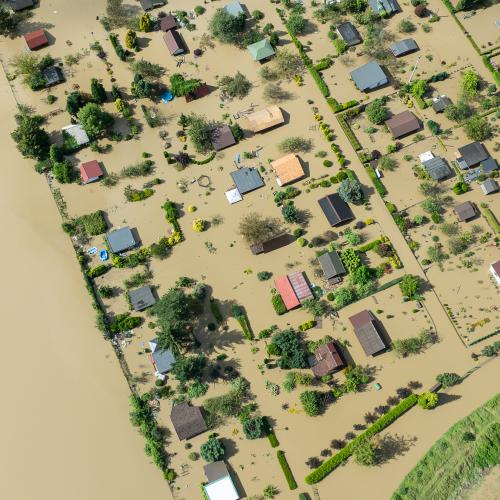The increasing frequency and severity of disasters, exacerbated by climate change, socio-economic disparities, and political fragilities that weaken some countries’ ability to respond and adapt to these events, make crisis anticipation paramount.
Proactive disaster risk management strategies that save lives and protect livelihoods have never been more crucial. Early warning systems that enable decision-makers to anticipate and mitigate the cross-sectoral impacts of crises play a key role, according to JRC scientists.
Multi-hazard frameworks needing improvement
One of the study’s strengths is its emphasis on a multi-hazard framework that integrates diverse risks as follows.
- Floods – Enhanced seasonal and sub-seasonal hydrological forecasts through the EU and Global Flood Awareness Systems provide critical insights into potential flood risks.
- Conflict – Addressing risks within a -month period at a sub-national level using innovative tools such as the Dynamic Conflict Risk Model, (DCRM) which employs advanced machine-learning techniques.
- Droughts and food security – Tools like the Global Drought Observatory forecasts link environmental conditions with food insecurity risks.
- Tropical storms – Forecasts utilise various inputs, including large-scale oscillations, sea surface temperatures, and atmospheric patterns.
- Migration – Integrating migration monitoring into crisis prediction highlights the growing importance of understanding human mobility in response to disasters and conflicts.
- Health and nuclear risks – Monitoring epidemics and nuclear events adds extra preparedness layers to protect public health and safety.
The methodology employed signal templates as a structured framework for collecting data, which was subsequently used to create causal loops. These visual representations provide a concise summary of key findings, elucidate the interconnections between hazards and impacts, and suggest the compound effects of interrelated risks, thereby identifying opportunities for proactive measures.
However, scientists noted that the diverse tools and methodologies used for monitoring and forecasting risks posed challenges due to variations in methods, lead times, update frequencies, and reliance on manual processes. While their approach leveraged a combination of multi-hazard risk knowledge, causal loops, and early warnings, they faced challenges in generating standardised, actionable evidence for decision-makers.
These conclusions underscore the critical need for an integrated, multi-hazard mid-term early warning system, supported by continued efforts in knowledge collection, validation, and model enhancement.
Recommendations to improve disaster risk prevention and preparedness
The report highlights the need to address cascading risks, where one hazard triggers or exacerbates another, such as drought increasing vulnerability to floods. Strengthening collaboration through improved information-sharing and coordination across EU agencies and international partners is also recommended.
Extending the early warning window to 6 months or more could maximise the efficiency of disaster risk management by unlocking the potential of anticipatory actions, according to the report, thereby reducing the impact of disasters.
